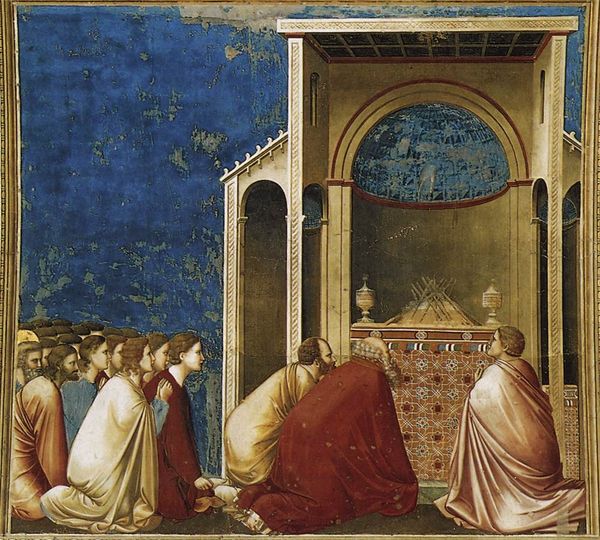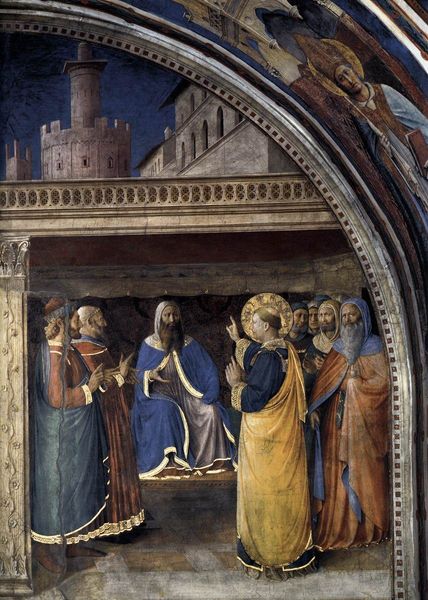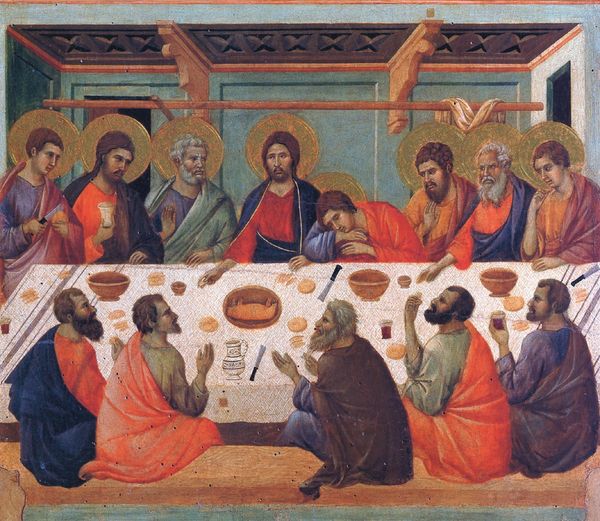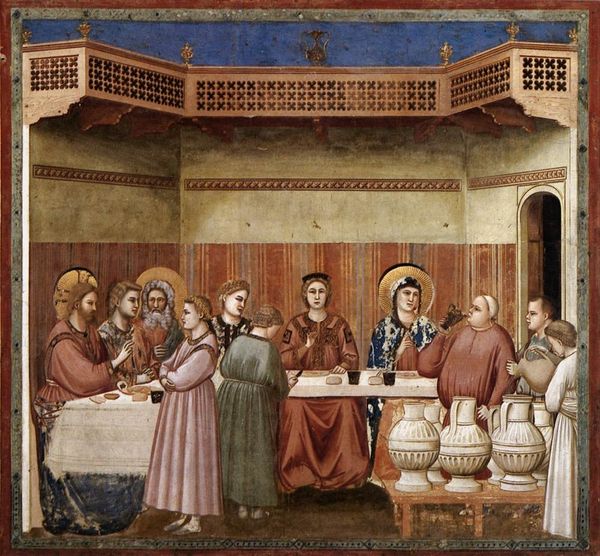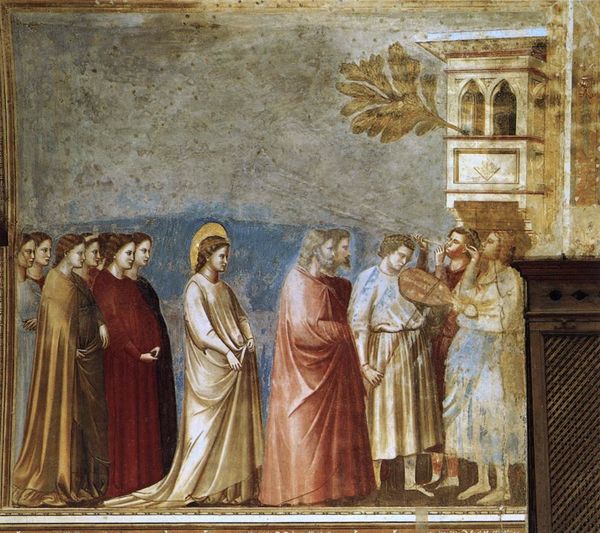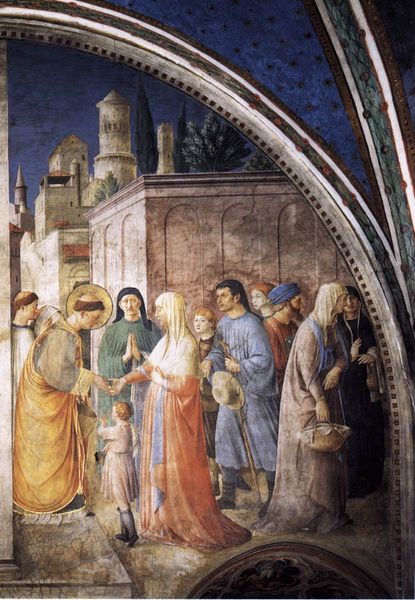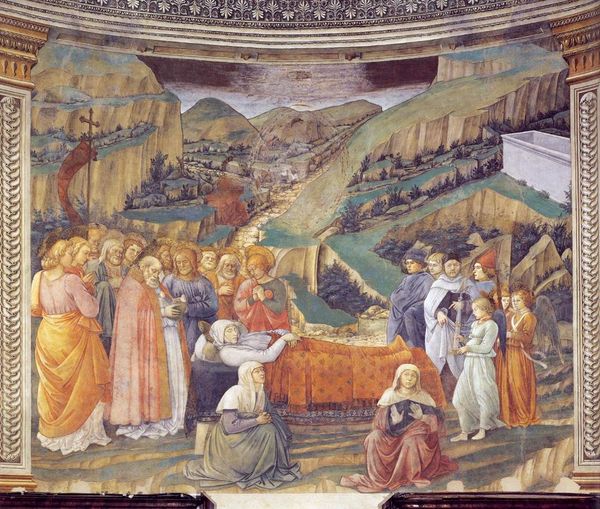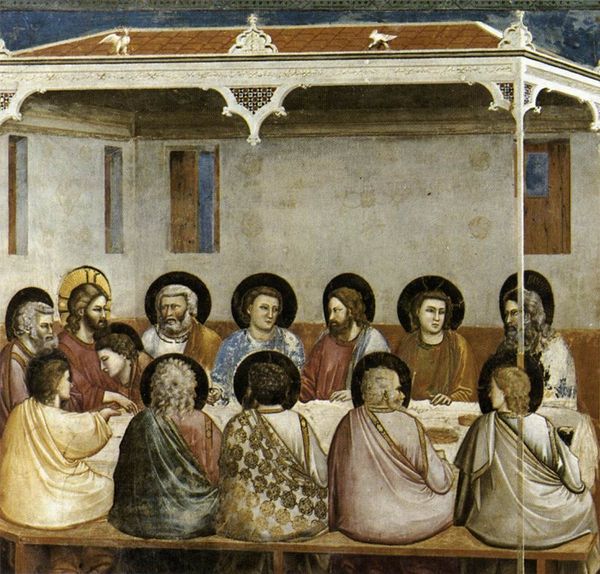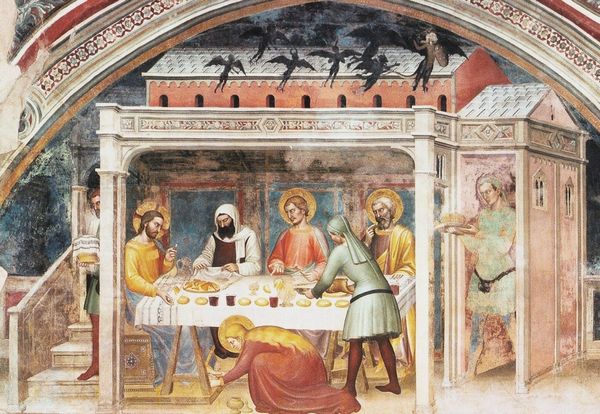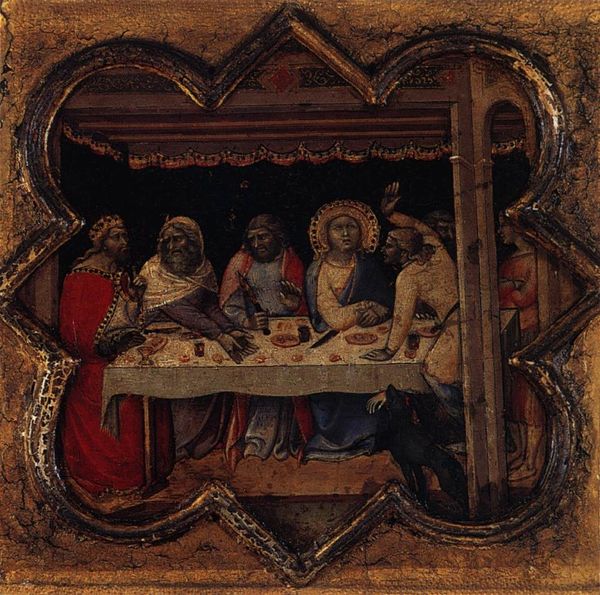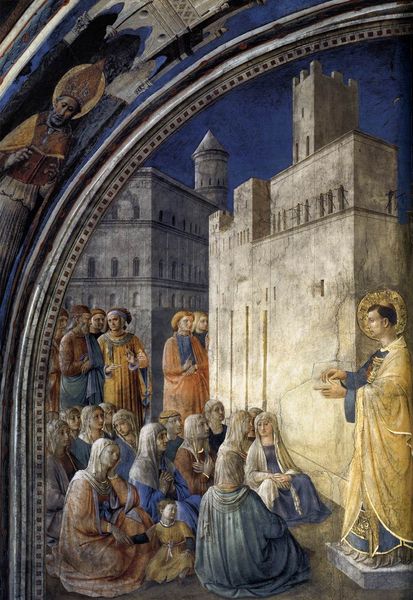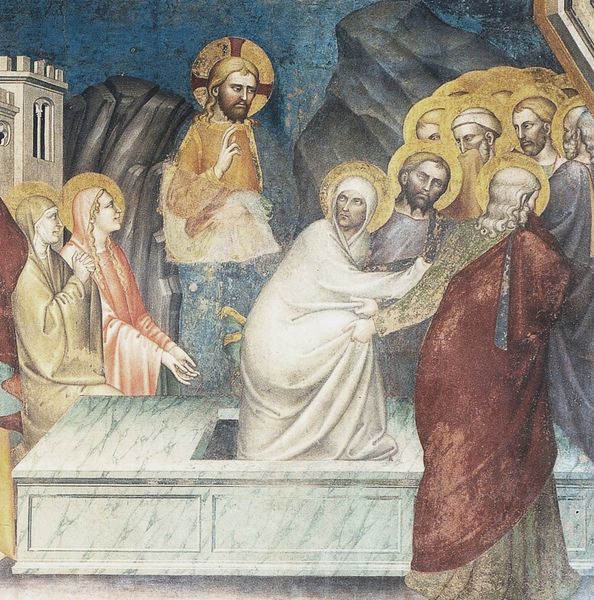
The Death of the Knight of Celano 1300
0:00
0:00
giotto
Basilica of Saint Francis of Assisi, Assisi, Italy
painting, fresco
#
medieval
#
narrative-art
#
painting
#
holy-places
#
painted
#
figuration
#
fresco
#
oil painting
#
christianity
#
history-painting
#
italian-renaissance
Dimensions: 230 x 270 cm
Copyright: Public domain
Curator: Here we see Giotto’s fresco, "The Death of the Knight of Celano," completed around 1300 and currently located in the Basilica of Saint Francis of Assisi. It depicts a scene of communal grief but I'd be keen to hear your initial reaction. Editor: Immediately, I am struck by the intense emotional weight. There's a pronounced divide—a table laden with untouched food separating the holy figure and the devastating scene of loss. The downward curve that seems to almost emanate from the heavens contrasts rather strikingly with the horizontal orientation of the composition. Curator: Indeed, the composition hinges on that duality. Notice how the table forms a strong horizontal line, anchoring the lower portion of the fresco, but look at the perspective, how it tilts slightly upwards to enhance that dynamic between worldly suffering and spiritual significance, with that blue form occupying the upper section, as you noticed. Editor: And this intense, unearthly blue draws the eye upward toward an indescribable something…perhaps symbolic of divine presence or intervention? It overwhelms the other design elements. I think that contrast amplifies the overall message here, the intersection of worldly affairs with the spiritual realm. Curator: Precisely. The downward gaze and gestures towards the deceased knight reinforce a sense of collective mourning, while St. Francis, set slightly apart, functions as a figure of spiritual authority but consider that he has a halo as well. These elements combined create a compelling pictorial space which draws the eye back again and again. Editor: The halo! Of course, that links St. Francis back to the overarching themes and history of divine love in art, reinforcing the sense of otherworldly comfort present despite the grim occasion. Seeing it now through this historical lens makes this piece all the more profound. Curator: Ultimately, I think the power of the fresco lies in Giotto’s sophisticated structural arrangement paired with the highly expressive figures. I am impressed by Giotto’s orchestration of forms and pictorial space here. Editor: It does allow the symbolism and themes of mortality, faith, and divine presence to converge and resonate powerfully, both now and for the audiences it has seen across centuries. It is a masterful encapsulation of shared human experience, even with such dramatic symbolism throughout.
Comments
No comments
Be the first to comment and join the conversation on the ultimate creative platform.

